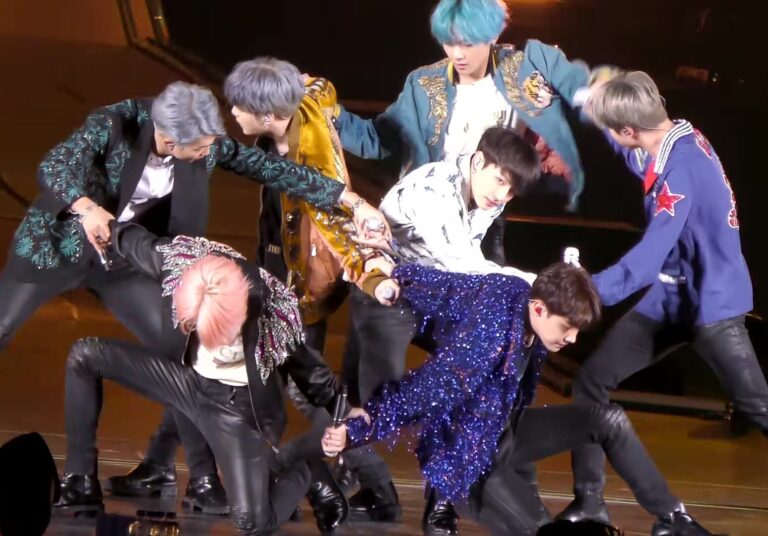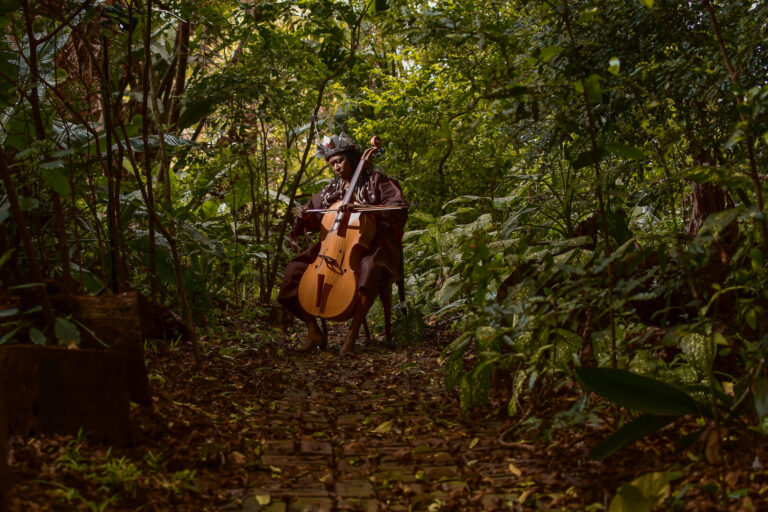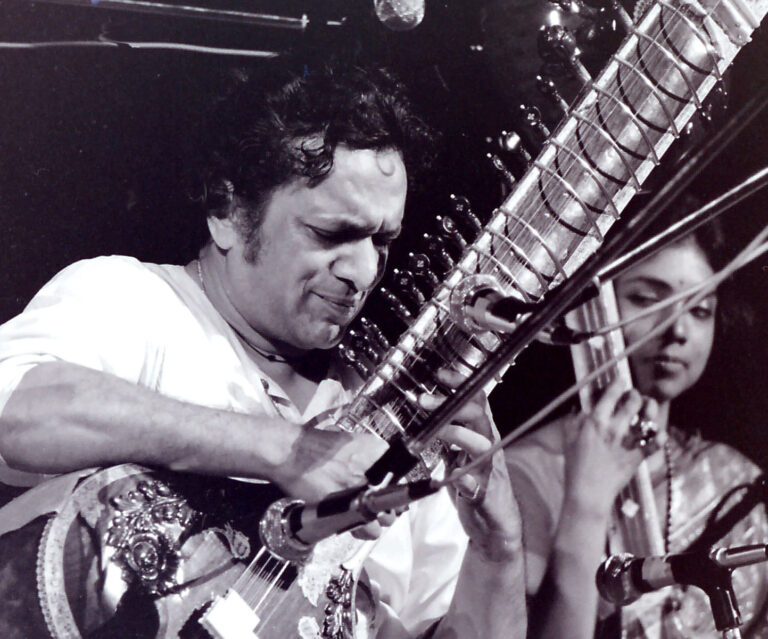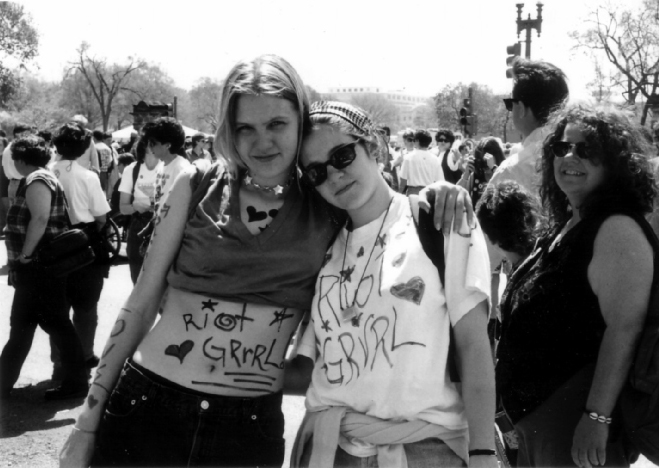This article makes the case that the discourse around K-pop supergroup BTS and their fans—known as ARMY—marks an intersection between techno-Orientalism, the abstraction and demonization of Asian labor, and Korea in the US imperial imaginary. BTS exemplifies what I suggest is a contemporary form of Asian racialization that emphasizes the Asian figure as embodying a series of seeming contradictions between the synthetic/mechanistic and the undeveloped/primordial. BTS reveals the ways that these threads of racialization do not contradict but rather complement each other, explaining how narratives marveling at the group’s technical proficiency/synchronicity/productivity can exist side by side with suggestions that their musical output is the result of a labor that is denigrated because it is perceived as being mechanized, abstract, and devoid of the qualities of artistry and creativity exclusively associated with Western modernity.
Keyword: music
Regional Mobilities, Technology and the Status of Myth in Africa: Retrieving Musical/Creative Codes in KwaZulu-Natal before Colonialism
This article tracks my intellectual journey in trying to understand the role played by craft specializations before the colonial era in KwaZulu-Natal (South Africa), which is the area where I come from. I do this by a comparative look at how craft specializations happened in other parts of the African continent, an approach prompted by the absence of older written or documentary sources on KwaZulu-Natal, prior to the advent of European colonialism. A key finding of the research is that the cultural and ritual repertoires of craft specialists reveal conceptual domains of expertise that are derived from intra-African regional dynamics. This contrasts with the colonial belief that implied that notions of expertise were as a result of European or Asian human contacts. In looking at craft guilds, I am interested in how ritual, technological skill and the mastery of certain musical/creative acts played a part in the formation of regional blocs in ancient Africa. Such a historical understanding may be crucial to our present-day understanding of emergent processes of regionalization and identity formation.
Satisfaction Guaranteed: Techno-Orientalism in Vaporwave
A characteristic frequently glossed over in scholarly examinations of the online electronic music genre vaporwave is its use of East Asian cultural imagery in its paratexts. One exception is a piece by musicologist Ken McLeod, who connects vaporwave’s use of visual references to Japanese culture to techno-Orientalism, a term that describes how paranoia around Japanese economic expansion in the late twentieth century manifested in American and European cultural products. This article extends McLeod’s argument to show how the uses and reproductions of East Asian cultural elements in vaporwave serve to reinforce stereotypes consistent with histories of techno-Orientalist representations, particularly with regard to gender. This article elaborates on the anonymous nature of the vaporwave scene to complicate approaches to techno-Orientalist analyses of digital artifacts. In doing so, this essay contributes to the growing body of scholarly literature addressing the roles representation, aesthetics, and affect play in the formation of communities around music genres online.
Review of Tehrangeles Dreaming: Intimacy and Imagination in Southern California Iranian Pop Music by Farzaneh Hemmasi (Duke Press)
Tehrangeles Dreaming is the first book about the Tehrangeles music industry, that is, the Iranian diaspora music industry brought to life by the expatriate Iranian artists and music producers who settled in Los Angeles and Southern California after the 1979 Iranian revolution. Farzaneh Hemmasi uses an ethnographic approach in combination with an analysis of diaspora media discourse in order to “examine expatriate imaginations of influence on, and intimacy with, their global Iranian audiences” (26). At its core, the book deals with the imagining and reimagining of Iranian identity by the artistic community that creates music and media content for Iranians in Iran and across the world.
An (Un)Marked Foreigner: Race-Making in Egyptian, Syrian, and German Popular Cultures
This essay negotiates the critical tension between race as an analytic and social construct by examining how race becomes socialized in and through the production and presentation of Arab culture in two ethnographic case studies: how Syrian musicians negotiate musical multiculturalism as they integrate into German society and how independent musicians in Egypt navigate the racialized entanglements of national and international security logics that privilege Western foreigners. Both these case studies center the “foreigner” subject as one who embodies proximity to white power and delimits the boundaries of such power. We argue that the category of foreigner is thus a racialized construct that not only complicates the Black–white binary of race relations but strategically evades explicit discourses and practices of racecraft that are violent, discriminatory, and exclusionary. By provincializing critical race theory through the particularities of Arab lived experience, we illustrate how local social categories are entangled with historic legacies of empire and contemporary global logics of racialized difference while remaining sensitive to how conceptions of difference exceed Euro-American categories of race. Our work therefore directs attention towards alternative enactments of racialization within the Global South.
Sounds from Nowhere: Reading Around Raga-Jazz Style
When Pandit Ravi Shankar began performing for Western audiences in the 1960s, his collaborative instinct for the meeting of Hindustani music and jazz was challenged by what he described as “shrieking, shouting, smoking, masturbating, and copulating” audiences of “strange young weirdos,” according to Mick Brown writing for The Telegraph. We can only imagine the debates of high and low art which were fought between Shankar and George Harrison, Bud Shank, or even Tony Scott, who were few of his many collaborators from the West. Caught between its original referent and its appeal to learned style, jazz (with its roots in African-American history) is placed at the center of debates about authenticity, gatekeeping, and located-ness. Once something like “world music,” composed through collaboration, fusion, and re-sampling, enters a space not used to any of the styles mixed into this world of music, it creates unique soundscapes. Ethnomusicologist Martin Stokes, writing “On Musical Cosmopolitanism,” looks at the course of sounds through the world to think of music “as a process in the making of ‘worlds,’ rather than a passive reaction to global ‘systems'” (6). The world created is never an unproblematically imported ambience. A jazz club anywhere in the world does not always correspond to Dixieland, or Chicago, or New York, nor does it reveal the influence of Black labor-songs, vaudeville, or ragtime. This is where an album like Indian composer duo Shankar-Jaikishan’s Raga-Jazz Style (1968) becomes interesting, compressing 11 ragas from Hindustani music into curt pieces corresponding to different, morphed forms of jazz. By looking at the history of the circulation of interfused styles of jazz in America, Goa, Bombay, and mainstream Hindi cinema, this paper examines the material conditions of creativity, and attempts to inscribe this global creative collaboration of forms into a connected history of jazz and Hindustani music.
Review of Hungry Listening: Resonant Theory for Indigenous Sound Studies by Dylan Robinson (University of Minnesota Press)
In his new book Hungry Listening: Resonant Theory for Indigenous Sound Studies, Stó:lō music scholar Dylan Robinson contributes to the decolonization of music studies by advocating for a critical awareness of listening positionality. One of the activating forces for this work was the increase in Indigenous participation in classical music since the early 1990s. This resulted in collaborations between non-Western musicians and classical music ensembles in North America that were not necessarily based on reciprocal relationships, instead “fitting” Indigenous artists into paradigms of Western performance and composition. Hungry Listening seeks to transform the way we recognize Indigenous sovereignty, perceiving Indigenous oral, aural, and written expressions as sovereign in and of themselves.
Review of I’m Not Like Everybody Else: Biopolitics, Neoliberalism, and American Popular Music by Jeffrey Nealon (University of Nebraska Press)
In I’m Not Like Everybody Else, Nealon is not like everybody else (i.e., a poptimist), but rather dissects the position of popular music in American society and culture in the present moment. The title of the book comes from a performance by Ray Davies (former singer for the Kinks) at the Austin City Limits Music Festival in 2006. In a YouTube video of the performance, Nealon notes that when “the song’s titling chorus returns, the hipster ‘Keep Austin Weird’ audience is shown, all in unison, chanting ‘I’m Not Like Everybody Else.'”(68) It is in this example that he sees “the mass individuality logic of biopolitics in one concise screenshot: I’m ironically just like everybody else in and through my axiomatic self-assurance that I’m not like everybody else.” (68) This passage perfectly sums up Nealon’s thesis: through a capitalism that aims to make everyone a mass individual, people reaffirm their identity “not” being like everyone else, while at the same time failing to produce their identity positively.
Muslim Voices, Moorish Masks: Theoretical Perspectives on Music and Islam in Southern Spain
This article proposes a new theoretical framework for the study of music and Islam in Andalusia, southern Spain. I demonstrate the framework’s potential by applying it to collaborative musical performances among Muslim economic migrants, European converts to Islam, and non-Muslim Andalusians during a year-long heritage festival that celebrated the region’s medieval Islamic past, arguing that musical analysis opens fresh lines of inquiry into the expression and experience of Muslim subjectivity in Andalusia. In the process, I engage with theoretical debates on hybridity in anthropology and ethnomusicology, orienting my own perspective along the axis of performativity, while in dialogue with Hispanic studies and Spanish cultural studies I think along the borders between hybridity and hauntology to recalibrate discussions of Spanish historical memory for a theoretical framework that ultimately coalesces into scenes of Moorishness: crowded, contested scenes in which musicians, festivalgoers, and festival organizers mutually interpellated each other under the rubric of Andalusia’s medieval Islamic past.
I Can Sell My Body If I Wanna: Riot Grrrl Body Writing and Performing Shameless Feminist Resistance
Leah Perry presents a feminist history of Riot Grrrl and Kathleen Hanna in order to explore the hope and the limits of an individualist revolution in the 1990s. Perry takes on the performance of shamelessness, embodied in Hanna’s songs as well as through bodywriting, sex work, zine production, and other aspects of the riot grrrl movement. Ultimately Perry exposes the position of these performances: they are alternative youth culture for certain subjects which both work against and from within the structures of neoliberalism. Perry concludes that shamelessness might remain a promising space for an urgent anti-racist, feminist politics, if it can work to destabilize power and center women from oppressed groups.
“Make the Music with Your Mouth”: Sonic Subjectivity and Post-Modern Identity Formations in Beatboxing
This paper investigates the possibilities of pleasure, sound, and the disruption of the iterations of identity in progressive time. How does sound reformulate how we see whiteness, heterosexuality, and female-bodied people? Beatboxing as a citational and intertextual form—phatic, rhythmic, sonorous, and lyrically side-steps some of the traps of rap music or other hip hop forms through its embodiment of sounds rather the logics of lyrics and traditional musical structure. In that way it remakes—queers—our alliances, allegiances, and sonic sensibilities.
Whistlin’ Dixie
Whistlin’ Dixie seeks out folks at the forefront of the Southern queer music scene — living examples that queer community can thrive in these previously written off country roads and postindustrial cities. This documentary showcases these communities and examines their influences, challenges and motivations while putting a face on what it means to be queer, young and Southern.








